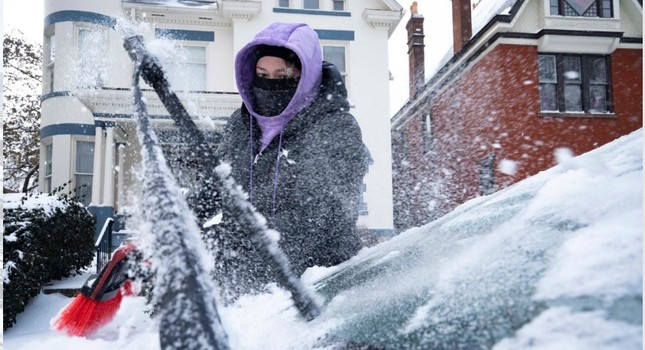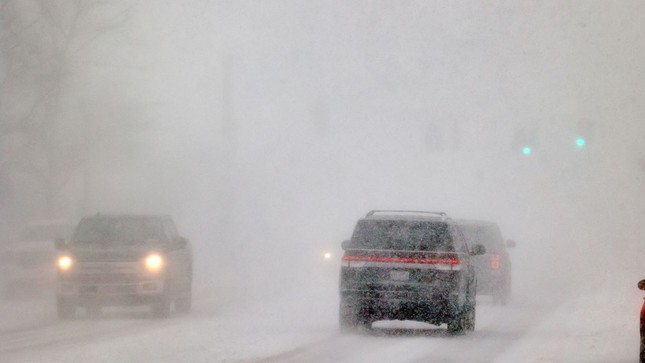
Snow covered streets across the United States.
The storm intensified on December 23 as it moved through the Midwest and East of the United States, leaving roads covered with snow and ice with limited visibility. Coastal flooding is also a problem, particularly along the Northeast coast.
“Christmas has been canceled,” said Mick Saunders, a resident of Buffalo, New York. All family and friends agree that this is the safest way."
Coldest Christmas in decades
The cold is life-threatening on the Gulf coast and Mexican border, with sub-zero winds reported as far south as Austin and Atlanta. Many locations in the Eastern United States are experiencing the coldest Christmas Eve in decades.
According to the website PowerOutage.US, about 1.2 million customers in the US are experiencing power outages between winter weather and frigid temperatures. Maine, New Hampshire, New York, Virginia and Pennsylvania suffered the most blackouts.
In total, more than 200 million Americans from the Canadian border to the Mexican border and from Washington state to Florida, have been warned of severe winter weather with blizzards, ice, snow, and flooding.
Notably, parts of Montana, South Dakota and Wyoming have seen wind chills below -10 degrees Celsius over the past two days.

The snow is thick and visibility is reduced and it is very dangerous to drive off-road.
Many will experience a chilling holiday unlike any other. Atlanta, Philadelphia, Pittsburgh and Tallahassee, Florida, are all forecast to have their coldest temperatures ever recorded on December 24, according to the US National Weather Service.
Washington DC welcomes the second coldest Christmas Eve in history, just after 1989. In New York, this year's Christmas is the coldest since 1906. Chicago expects temperatures to rise again above 0 degrees Celsius, but will still experience the coldest Christmas since 1983.
Storm is expected to become 'tornado'
On December 23, the blizzard caused more snow and denser snowstorms, especially in the Midwest of the United States.
As it moved east across the US, the storm was predicted to become a "bomb storm". The storm's pressure is forecast to be on par with a Category 2 hurricane as it continues to move.
Governors in at least 13 states, including Georgia and North Carolina in the South, deployed emergency measures in response to the storm. Declarations of emergency in several states have included the activation of National Guard units.
One of the biggest dangers of a major winter storm alongside heavy snow and blizzards is a rapid drop in temperatures over a short period of time. The air will continue to get colder, especially at night.